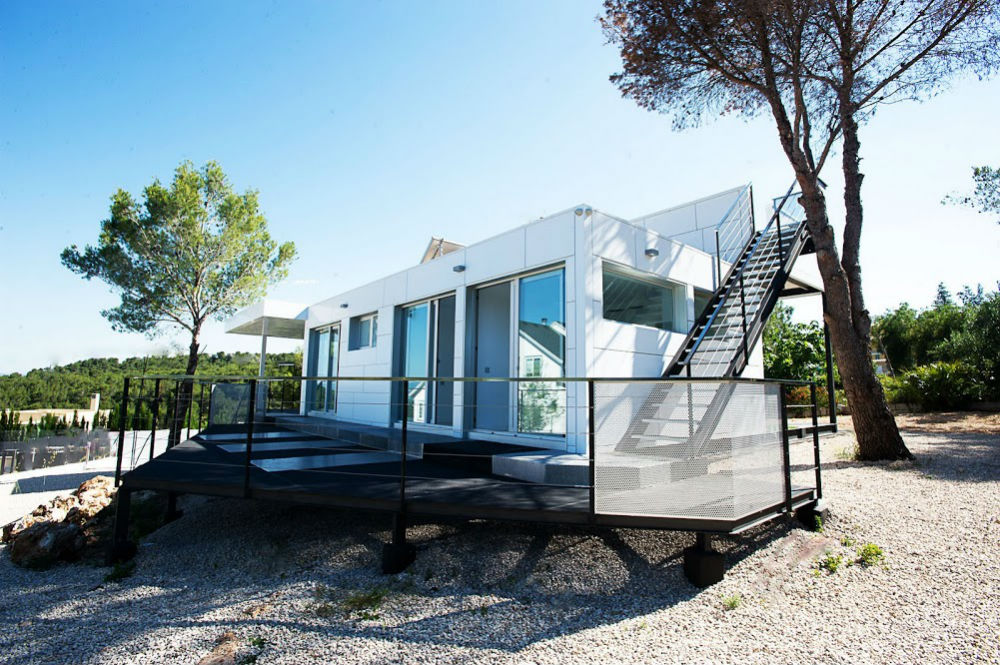Have you ever seen a flat-pack home? It shares similar concepts with a modular, kit, or prefabricated houses. Its popularity is on the rise nowadays, yet it is not a new concept. Historically, a flat-pack home is already present since World War II. Surprising? It is, in fact, the type of tent that the soldiers used during the war.
After WWII in the 1950s, a flat-pack home is slowly gaining attention as an economical option for a family house. By the 1960s, the demand for this housing surged across Europe. This structure is famous in the UK even to this day due to extensive housing shortages.

A flat-pack home has come a long way since the previous models were inefficient and cramped. Now, it is stylish, eco-friendly, and energy-efficient. Let us discuss the crucial details you need to know about this easy-to-build house.
Types of Flat-Pack Homes
Getting confused about the flat-pack house for sale advertisements you saw from different companies? Well, don’t be. No matter how many models you checked out, there are only three flat-pack home categorical.
-
Barebone
This type of unit obtains every needed feature to build your home like the floor, walls, ceilings, doors, windows, et cetera. The company will only send all the structural components to the client, building the home structure by his own means.
-
Basic Build
This category is different from the first one since the company will both provide the materials and build the home for the client. However, he will have to handle other house necessities like installation of floorings, painting, decorating the interiors and exteriors of the house, kitchen and bathroom fittings, et cetera.
-
Turnkey
This kind of project is the full package where the entire home is delivered. The client does not have to concern about any work since the company will deal with the most features of the house.
The 3 E’s: Why People Like Living in Flat-Pack Homes?
Many people like living in their flat-pack homes because of these benefits:
-
Easy to build
Whatever style of flat-pack home you buy, it can be built in just a matter of weeks, compared to the traditional home that may take months to furnish fully. Even if it is easy to assemble, flat-pack houses are durable, and some are manufactured to be earthquake-proof.
-
Eco-friendly
These homes are generally made from timber and other locally sourced materials. Some companies offer Structural Insulating Panels (SIPs), which came from renewable resources. These panels actively provide much insulation. This feature addresses the common challenge of flat-pack homeowners when it comes to varying temperatures.
-
Efficient
Not all houses are built to sustain features like utility optimization or energy efficiency. Flat-pack structures often come with solar panels and sustainable off-grid feature, which reduces the total expenses on housing miscellaneous.
The 3 “Less” Reasons of Flat-Pack Homes
There are a couple of reasons why flat-pack structures are economical compared to traditional homes.
-
Less Time
Buying a flat-pack home can save you much time and relieve you from stress, aside from the cost, of course. More often than not, companies that sell container homes are a one-stop-shop for all home necessities. Also, some manufacturers compromise and provide significant discounts because clients buy in bulk.
-
Less Labor
In traditional home structuring, there are many types of subcontractors like plumbers, electricians, decorators, et cetera, who all need to coordinate with one another. Typically, this leads to such delays in waiting on other subcontractors to complete their particular tasks. Whereas in flat-pack building, everything will come directly from a single factory. The cost of labor is already reduced since it can be organized quickly and efficiently.
-
Less Waste
Reality check, waste is a big issue that cannot be disregarded when contractors are building a house. Mainly, this is due to the several deliveries of building materials to the site. The volume of these deliveries may lead to a lot of excess supplies, which then go to disposal. Flat-pack manufacturers will save you from this problem since the system on their factories are more streamlined.
The 4 S-Factors: Flat-Pack Home Costings
If you want this type of modern housing, then you might want to check these four S-factors that a potential homeowner should consider.
-
Site
As long as the topic is about real estate, the site concern is always numero uno. Where you plan to build has the same importance as what you build. The metros have costly location prices compared to rural areas and suburbs.
-
Style
Do you have any style or design of the flat-pack home that you prefer? The cost per square foot will depend on the style you want. Some housing may only cost 50USD per square foot, but this pricing will increase if you want the luxurious type design.
-
Size
Once you have settled on cost per square foot, you may now determine how much square footage will be enough for you. If you are finally decided on the size, then multiply it to the price per square foot.
-
Savings
The product that you had from the style multiplied by size computation is the amount that you need to finance. Now the question is, can you afford it? Do you have enough savings? If not, how much can you loan?
Conclusion
To sum it up, the flat-pack homes have evolved over the years. From cramped and inefficient, now they are efficient, eco-friendly, and stylish. These housing structures are economical since they only require less time, labor, and waste. Also, it is crucial to know the factors that will affect financing modern type flat-pack homes.

